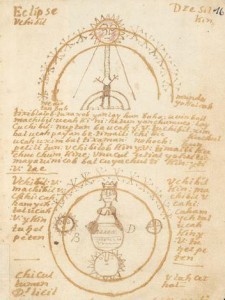
The Book of Chilam of Chumayel by Ralph L. Roys was published in 1933. The Books of Chilam Balam are the sacred books of the Maya of Yucatan and were named after their last and greatest prophet. Chilam, or chilan, was his title, meaning he was the mouthpiece or interpreter of the gods. Balam means jaguar, but it is also a common family name in Yucatan, so the title of the present work could well be translated as the Book of the Prophet Balam. During a large part of the colonial period, and even down into the Nineteenth Century, many of the towns and villages of northern Yucatan possessed Books of Chilam Balam, and this designation was supplemented by the name of the town to which the book belonged. Dowload the free ebook here:
 Book of Chilam Balam the of Chumayel
Book of Chilam Balam the of Chumayel
What is The Book of Chilam Balam of Chumayel about?
The Book of Chilam Balam of Chumayel is one of the surviving texts from the Maya civilisation in present-day Mexico, primarily written during the late Postclassic period of Maya history (circa 1300-1697). The “Books of Chilam Balam” are a collection of nine related manuscripts, with the Chumayel being one of the most studied and notable.
Yucatec Maya authors wrote the Chilam Balam texts after the Spanish Conquest, and they contain a mix of mythology, prophecy, history, and herbal medicine. The name “Chilam Balam” translates to “Jaguar Shaman” or “Priest,” and is associated with the ancient tradition of prophecy among the Maya.
Here are key elements that the Book of Chilam Balam of Chumayel, like others in the series, typically encompasses:
- Historical Chronicles: These sections often relate the history of the Maya people from their early migrations to the Yucatan up to the times during and after the Spanish Conquest. It reflects the turmoil and changes that came with colonization, including the introduction of Christianity.
- Prophecies: The books are perhaps best known for their prophetic aspects. The Chilam Balam texts include predictions about the Maya people’s future and the Spaniards’ coming, often written in a symbolic and poetic style. These prophecies, sometimes written as if made before the events occurred, often merge pre-Columbian religious beliefs with Christian elements.
- Rituals and Ceremonies: Detailed descriptions of certain Maya rituals and religious practices are also included. These give insight into the post-conquest fusion of Christian and traditional Maya religious practices.
- Astronomical and Astrological Texts: The Maya were accomplished astronomers, and the Chilam Balam books continue this tradition by including various charts and tables, often of an astrological nature, predicting the fate of the community based on the movements of celestial bodies.
- Medicinal Recipes and Folk Remedies: The texts include a variety of medical knowledge, listing herbal remedies, and traditional practices for treating various ailments.
- Transliteration of European Events and Practices: Some parts of the texts involve transliterations of Spanish or Christian terms, events (such as Christian religious stories), and calendars, reflecting the complex cultural synthesis that occurred in the centuries following the conquest.
The original text is in Yucatec Maya, written using the Latin script taught by Spanish missionaries. The Book of Chilam Balam of Chumayel, like the other books of Chilam Balam, represents a critical source for understanding pre-Columbian Americas, offering a unique perspective on the synthesis of Spanish and Maya cultures and the resilience of Maya civilization and thought despite the profound disruptions of the colonial period.


ABSOLUTLY DELIGHTED AND GREATFUL FOR YOUR GENEROSITY, I BLESS THE DIVINITY WITHIN YOU, THANK YOU, GOD BLESS YOUR SOULS.